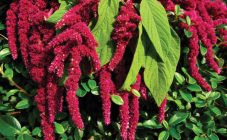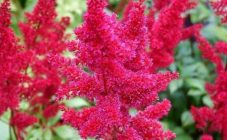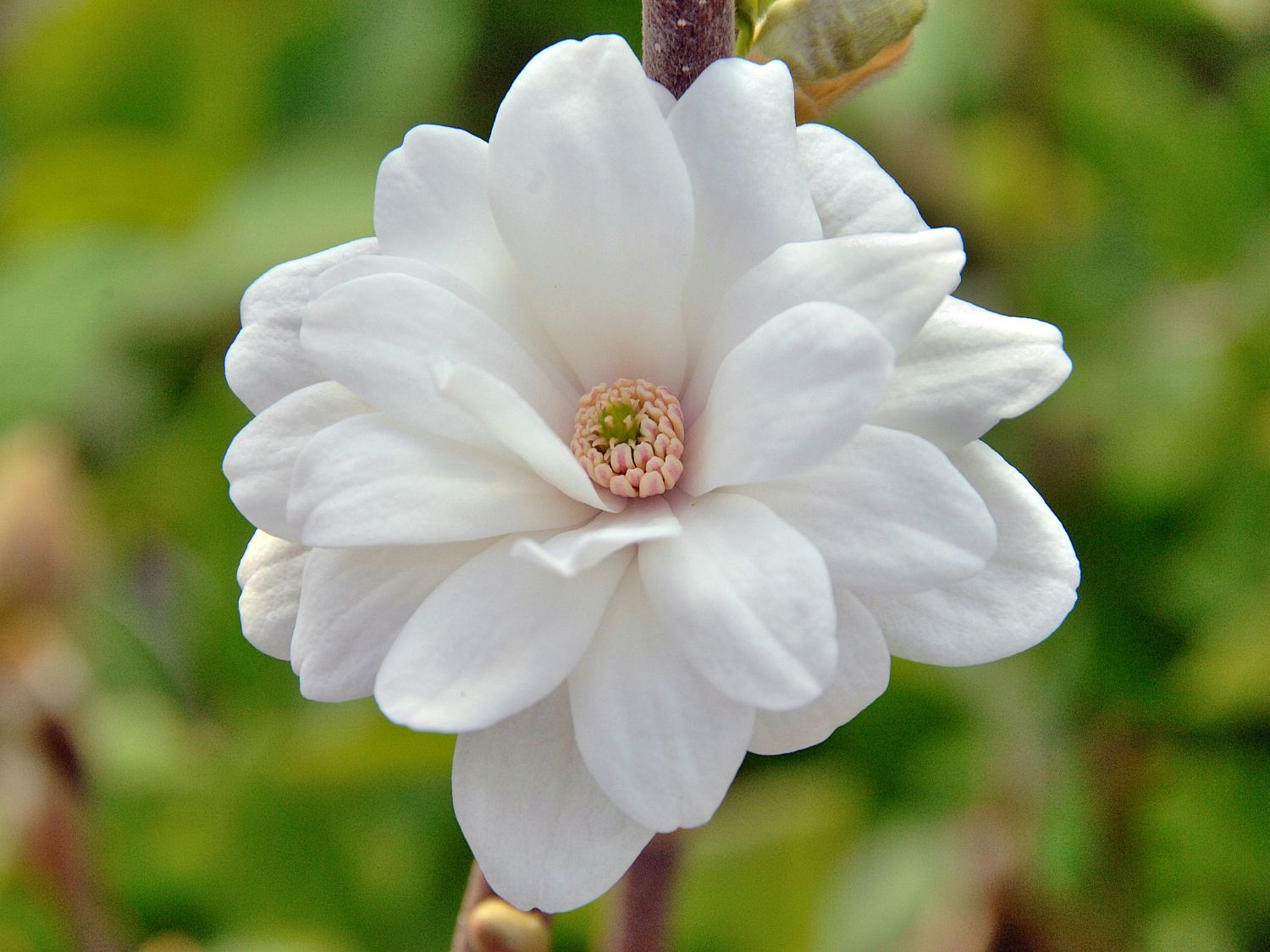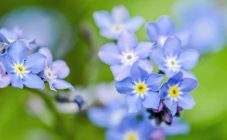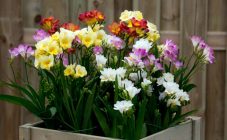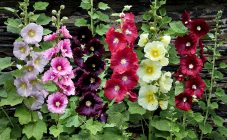Content:
Quite often, an unpretentious plant with bright, large, very beautiful flowers, vaguely similar to all known chamomile, is found in the garden. But echinacea is different - more juicy, original, decorative, bright. The cultivated varieties are distinguished by a variety of color shades, which emphasizes their decorative effect. It blooms for a long time, about two months, massively, creating a carpet effect.
Perennial echinacea flower
Echinacea - flowers that look wonderful in mixed beds, mixborders, single planting, clumps. Side by side they look good with phlox, asters, rudbeckia. In autumn, this combination will create a bright flower bed decoration.
Echinacea flower is grown for cut. The flora is very popular with bees. Refers to medicinal plants.
Where do you come from
North America is considered to be the homeland of Echinacea. In the wild, it is found among fields, on rocky hills, in the steppes, prairies of Central and North America. Secondarily distributed in Great Britain, Greece, France, Norway, Ukraine. Not so long ago, echinacea began to be cultivated in Australia, New Zealand in the Middle East.
It grows independently along railway embankments, actively self-sowing.
Useful and medicinal properties
To this day, among medicinal and medicinal plants, Echinacea purpurea occupies a leading place. It is considered one of the best remedies for fighting colds, all kinds of infections, inflammations. Perfectly strengthens the immune system.
Raw materials for the preparation of medicines are grass rhizomes, which begin to be harvested in late autumn with the arrival of frost. The usefulness of echinacea juice is noted, therefore, it is recommended to use freshly collected material for the preparation of medicinal tinctures.
There are dyes in the roots of the plant, which are used in the manufacture of natural dyes.
General information from biology
The perennial flower echinacea (echinacea) is a representative of the genus of the same name, although not so long ago it was on the list of a completely different genus: Rudbeckia. These two genera belong to the Astrov family, which is huge in its cultural composition, or, as you can still find, Compositae.
At first glance, there is no difference between the two genera. The flowers are similar in shape, the difference in color (for echinacea, ruby-pink is characteristic, for rudbek - yellow-orange, coffee) can hardly be called significant.
A bit of history
The confusion was caused by Karl Linnaeus when, describing a purple echinacea flower with pale pink petals, he called it Rudbeckia. Thus, he wanted to immortalize the name of his mentor - Olaf Rudbek.
After forty years, the error was corrected by the German botanist Mansch. He highlighted the differences between genera: plants differ not only in color, but also in the structure of bracts - small leaves around inflorescences.
In Echinacea, they are distinctive, tough, like thorns. After flowering and falling leaves, their needles are outwardly very similar to a hedgehog, from where they got their name - "echinacea", which in Greek means "prickly".
The bracts of the rudbeck are completely different, soft to the touch.
Plant characteristic
The leaves are green, often green-red at the base of the petiole, have veins, with jagged edges, oval-elongated, pubescent. Basal leaves - with winged long petioles, collected in a rosette. Stem - short petiolate, lanceolate.
Echinacea is a large flower, the arrangement of the petals is radial. Receptacle (core) in the form of a thorny cone. Blooms on tough, straight, weakly branched stems up to a meter tall. Certain varieties exude a fragrant aroma. Bloom in July - September. Seedlings do not bloom in the first year.
Echinacea rhizome: large, massive, edible, pungent in taste.
Characteristics of species and varieties of crops
There are 9 types of perennial echinacea flower. More hybrids are grown for decorative purposes, different varieties of Echinacea purpurea and Echinacea strange.
Purple is distinguished by its large (about 12 cm in diameter) amazing flowers with a dark brown core, convex, in the form of a dome. Echinacea strange has its own flavor: it alone has yellow petals.
The most popular magenta varieties:
- Stern garnet - flowers up to 13 cm of scarlet color with a weak down, with two teeth at the top;
- Sonnen Lach - Inflorescences form a basket up to 10 cm in diameter from burgundy reed flowers.
Echinacea Sunset
This is a group of hybrids that combine the best qualities of two echinacea: paradoxical and purple. In the description, they distinguish huge inflorescences with curved petals, a wonderful smell, strongly branching shoots, spectacular colors.
The results of breeding work were new varieties of white, light purple, pink, purple, orange, yellow color of baskets:
- Yulia - dwarf bush up to 45 cm, blooms with bright orange flowers.
- Cleopatra - baskets of inflorescences of a rich yellow color, 7.5 cm in diameter, have a horizontal arrangement of petals, which resembles a painted sun.
- Double Scoop Cranberry - the favorite of florists. Differs in a cranberry shade of baskets.
- Evening Glow- the petals of the inflorescence, in addition to being colored yellow, have an orange-pink strip. This gives them more grace than others.
- Musk melon... The name itself suggests the shade: the petals are orange-pink, moreover, their two-row arrangement creates a stunning double effect.
- Walking Flute - a special grade. The main feature: golden-yellow ligulate flowers twisted into tubes, located around the pistachio center.
There are echinacea plant varieties of various colors and sizes, double, low and tall, with a fragrant aroma, with unusual spotted leaves.
Echinacea flowers: cultivation
Growing echinacea is absolutely not difficult. It adapts to all conditions of weather and cultivation.
They are planted in a moisture-permeable, slightly acidic soil, although it grows in any place: in an open or partially protected from the wind, both in the sun and in the shade. When choosing a place where to plant seedlings, take into account that the plant grows in one place for up to 5 years. They are planted in shallow holes, previously filled with compost, to a depth of 5 cm, with a distance of about 30 cm between the bushes.
Echinacea is cultivated in early spring and late autumn by dividing overgrown bushes, the procedure is carried out every 3-4 years.
Can be grown from seeds harvested at the end of the season.In the cool period, seeds are sown, which germinate at + 13 ° C. The sprouts are grown up to 10-15 cm in height, then transplanted to a permanent place. With this method of cultivation, it will bloom in the second year.
Major diseases and pests of culture
The echinacea plant is quite resistant to disease. The main cause of perennial diseases is improper care.
Powdery mildew
On hot summer days, with concomitant high humidity, temperature swings day-night, Echinacea can get sick with powdery mildew. Excessively overfed with nitrogen specimens are especially susceptible to it. Disease symptom: a whitish bloom on the surface of the plant.
Fungal diseases
This flower is affected by fungal diseases: septoria, cercospora. The main symptom is the appearance of spots on the leaves, which weaken the plant, eventually leading to its wilting. In case of partial damage, diseased leaves and plant parts are cut off. For the effective treatment of echinacea, treatment with any available fungicidal preparations is used.
Viral diseases
With such an infection, deformation of the stems is visually observed, then the leaves turn yellow, dry out, and fall off. When the first symptoms are detected, the affected bushes are dug up, burned. The contaminated soil is disinfected with a very strong solution of potassium permanganate.
Pests
Various pests can settle on the echinacea bushes: bedbugs, pennies, slugs. They are struggling with the use of insecticidal preparations (actellik, karbofos, etc.). To prevent the appearance of slugs, crushed nutshells are evenly scattered over the surface of the soil, which will impede their movement.
Features of agricultural technology
The following activities should be noted in the growing rules:
- to enhance the carpet effect during flowering, to increase the duration of flowering, wilted specimens are constantly removed;
- hygrophilous flower - watered abundantly;
- responsive to feeding: during the active growing season in spring and summer, organic matter, mineral fertilizers are applied;
- preparation for winter: the stems are cut off, the ground around is mulched first with humus, then along the top with dry grass and leaves.
The echinacea plant has won the attention of many for its spectacular appearance and valuable healing properties. There is one more important undeniable advantage: it is unpretentious in care and cultivation.






